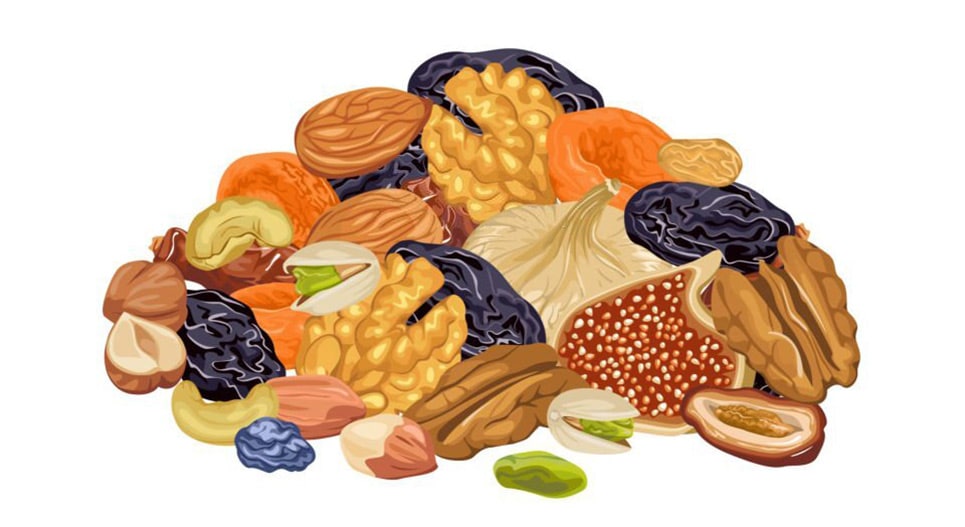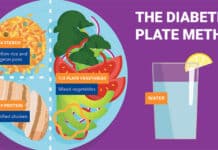So many puns have been invented about nuts that it's almost impossible to mention them without being mind-jacked (hijack of the mind) into an entirely different subject. The term “nut” is a noun, an adjective, a personal insult, a description of someone who doesn't eat cheese, and a three-letter word for Johnny Depp.
Regardless, nuts are healthy human food. They're delicious and contain impressive quantities of nutrients that offer us easy access to healthy fats, good protein, quality antioxidants, useful fiber, many B Vitamins, a wide array of minerals, and quick energy.
Before we get all nutty with nuts (see…pun), however, there are a few caveats with choosing these tasty little delights as your snack of choice, so don't start going nuts (darn it, we did it again) with them just yet.
The Downside of Eating Nuts
Many people have a negative physical reaction to nuts and don't really understand why. The fact is that nuts contain many “anti-nutrients”, which can disrupt the human digestive process and cause intestinal inflammation.
1. Phytic Acid
While important for the development and survival of plants, Phytic acid binds to minerals in the human digestive tract and interferes with their absorption into the body. This can result in mineral deficiencies as the body stops assimilating iron, calcium, magnesium, zinc, and other important nutrients.
Grains, legumes, and nuts all contain high amounts of phytic acid.
2. Lectins
Lectins are like nature's pesticide, designed to protect growing things from predators by screwing up the digestive tract of animals that eat them. While important for the health and survival of a plant, they are a detriment to humans.
Lectins attach to our intestinal lining, damage the delicate microvilli, and destroy health-promoting gut flora. This results in lowered nutrient absorption and a higher risk of leptin resistance, leaky gut syndrome, and autoimmune disease.
Lectins are unavoidable in the human diet as they are found in nearly all modern plants and animals. Still, they're most concentrated in grains, dairy, nightshades (eggplants, tomatoes, potatoes, peppers), soy, genetically modified foods, and nuts.
3. Omega-6s
Omega fatty acids are essential to human function, and the omega-3 to omega-6 ratio in the body is supremely important.
Ideally, we want this ratio to be one omega-3 for every omega-6, but because of the high intake of processed foods and vegetable oils in the standard American diet, that ratio is more like one omega-3 for every 20 or so 30 omega-6s.
The result is widespread systemic inflammation, heart disease, high cholesterol, and a host of other degenerative illnesses.
Most nuts and seeds have a high omega 6 content, throwing off our healthy fatty acid ratio.
The Upside: Healthiest Nuts for Snacking
So now that we've made it seem like you're going to die instantly the next time you eat pistachio, let's bring this topic back down to Earth and discuss why I recommend people eat nuts regardless of the phytates, lectins, and omega-6s.
If you tolerate nuts, they make an excellent healthy snack, and their nutrient profiles simply can't be ignored. A small handful or two is plenty to get the health benefits of nuts and avoid the negative impact of the anti-nutrients. The key is to avoid eating them like popcorn or a bag of chips.
Here is a list of the best healthy nuts for snacking in no particular order.
Macadamia Nuts
Macadamia nuts, or as we call them – little mouth-bombs of heavenly yummy-ness, are my favorite of all the nuts because of the smooth texture and their creamy, buttery taste.
Compared to other nuts, they provide the most energy, supply high levels of antioxidants, and are the exception to the rule with very low omega-6 content. They also offer iron and magnesium, which most people lack.
One of our favorite desserts is full-fat Greek yogurt with macadamia nuts and a variety of berries.
Note: Macadamia nut oil is the most stable of all nut oils, so it's a great option for cooking, as well as for use in homemade salad dressings.
Almonds
Almonds are actually a seed, but they pack a powerful punch as far as nutrients are concerned, one of which is a usable form of calcium. Add to that some great protein and immune-supporting elements like antioxidants, manganese, and Vitamin E, and almonds are a wellspring of bone-strengthening vitamins and natural infection fighters.
This study reported that people who eat almonds 4 times per week have a 37% lower risk of developing coronary heart disease. This study suggested that almond consumption reduces the risk of developing gall stones.
Walnuts
Walnuts are a true nut, one of the best antioxidant sources in the nut family, and a natural source of melatonin. They're also a good supplier of omega-3 and omega-9 fatty acids, which are important for keeping our arteries healthy.
This study showed that walnuts increased artery elasticity by 64% and prevented early risk factors of coronary artery disease and other heart problems in patients with high cholesterol.
If you can find walnut oil, definitely consider using it in cooking, as it is one of the healthiest cooking oils available.
Brazil Nuts
One word – Selenium!
Selenium is essential for thyroid function, immune health, and the production of sex hormones. Unfortunately, it's lacking in most modern diets.
2 or 3 Brazil nuts per day is sufficient for providing the selenium we need.
Seafood and organ meats are the next best sources, but neither comes close to the selenium content of Brazil nuts. They are hands-down the selenium superstars.
Chestnuts
It's also a true nut, but it's important to know that chestnuts are high in carbs and low in fat, which might pose a problem for people with blood sugar problems or metabolic issues.
Chestnuts are a good source of Vitamin C and are the exception to the phytate rule, having low levels of phytic acid.
Note: Athletes looking for a healthy carb source might consider chestnuts as a post-workout snack to replenish glycogen stores.
Pistachio Nuts
Studies have shown pistachios to be beneficial for both lowering cholesterol and maintaining weight. They are lower in calories than other nuts and have more potassium and Vitamin K per serving.
Pistachios are rich in antioxidants and Vitamin E. They also contain L-Arginine, which can make the lining of your arteries more flexible and lower your risk of developing blood clots that could cause a heart attack.
Pistachios especially make a great snack because you have to shell them yourself, making it less likely you'll go overboard.
Hazelnuts
Hazelnuts are also a seed and supply wonderful amounts of iron, Vitamin E, B Vitamins, magnesium, and fiber, making them great for the skin, bones, heart, nervous system, and digestive system.
Additionally, the high levels of manganese and alpha-tocopherol have been shown to be a powerful ally in protecting the body from cancer.
Pecans
Yet another true nut. Rich in fiber and 19 other vitamins/minerals, pecans contain more antioxidants than any other nut and are among the top 15 suppliers of antioxidants in any food. They also contain ellagic acid, which has the uncanny ability to inhibit DNA from binding to certain carcinogens, thus protecting the body from various forms of cancer.
Unfortunately, pecan pies are among the unhealthiest pies to consume, so it's best to just eat your pecan raw.
Notes on Peanuts and Cashews
The two most popular nuts in the US are on my list to avoid. We know; it figures:
Peanuts
Peanuts are the seed of a legume and are on my no-no list. They have a very high omega-6 content, are high in carbs, and are the most heavily sprayed food with pesticides.
Peanuts are also especially susceptible to mold, producing a toxin called “aflatoxin” during storage.
Aflatoxin has been shown to be carcinogenic in rats (in high amounts), and some studies performed in India and China showed a strong correlation between high aflatoxin ingestion and liver-cancer mortality rates.
Cashews
Cashews are one of the richest sources of phytic acid among nuts. The shells also contain cashew “balm”, which is used in insecticides.
The biggest problem with peanuts and cashews is our propensity to eat large quantities of them.
The negatives definitely outweigh the positives with these two. There are much healthier choices in the nuts listed above.
Soaking Your Nuts (Mind-Jack!)
If you're going to eat cashews, it's best to soak them because it will neutralize some of the anti-nutrients they contain. This is true of all nuts, actually, and soaking can make nuts more easily tolerated for those who are sensitive to them.
How To: Soak in water (add a couple of teaspoons of sea salt if you like) overnight or for up to 24 hours. Dry thoroughly by placing them in a single layer in the sun or the oven at the lowest possible setting, no more than 120 degrees.
Best Way to Eat Nuts
Nuts should be eaten as a snack, not a meal. Our ancestors probably found shelling nuts to be a slow and laborious process, so they couldn't just stuff them into their mouths by the handful. And they certainly didn't bake bread, muffins, and pancakes with them.
Nuts were also likely passed over much of the time for a more convenient and less time-consuming fare. Eat them with this in mind.
Furthermore, we understand many people like to add nuts and seeds to salads and smoothies. Still, we would advise that they be eaten unpaired from other minerals to avoid the absorption problems that accompany ingesting phytic acid.
We were going to end this article with yet another nut-pun, but we didn't want to drive you nuts.






